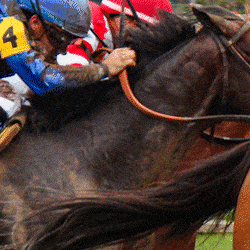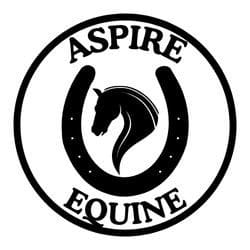
Opossums shed infective S. neurona eggs in their feces, and horses become infected by ingesting food or water they’ve contaminated. Getty Images
Equine protozoal myeloencephalitis (EPM) is one of the most prevalent causes of neurologic disease of horses in North America. It can be difficult for veterinarians to diagnose, however, because it often mimics other health issues. The disease develops when the protozoon Sarcocystis neurona or, less frequently, Neospora hughesi, infects a horse’s central nervous system (CNS). It can affect any portion of the CNS, from the front of the cerebrum to the end of the spinal cord.
Opossums shed infective S. neurona eggs in their feces, and horses become infected by ingesting food or water they’ve contaminated. Although many horses in the U.S. have been exposed to the organism, very few go on to develop true, clinical disease. Horses of either sex and of all ages can be susceptible, and no single season is consistently associated with a greater likelihood of onset.
Disease progression might be related to the number of organisms ingested, how long the parasites remain in the horse without treatment or clearing naturally, the parts of the brain and spinal cord the organism has damaged and stressful events following infection. Cluster cases are possible; however, EPM typically only affects one horse at a time on the farm.
Clinical Signs of EPM
“The most classic signs of EPM are ataxia (incoordination), muscle atrophy and asymmetry in the observed signs,” says Sarah Colmer, VMD, Dipl. ACVIM, fellow of large animal neurology at the University of Pennsylvania’s New Bolton Center, in Kennett Square. Affected horses might also display neurologic signs such as abnormalities associated with the cranial nerves on and around the head and face (eyelid droop, muzzle deviation), she added.
As far as asymmetry in clinical signs, facial paralysis might occur only on one side of the horse, for instance. In severe cases the horse might stand with his feet splayed or lean on a stall wall. It is very important that anyone handling a horse with these signs remains alert and does not work with the horse alone, because these animals can be unpredictable or unintentionally injure their handlers if they stumble and fall.
“EPM has been called the ‘great impersonator’ because it can look like so many different conditions, neurologic or otherwise, sometimes showing up as a bizarre gait or even a lameness,” says Colmer. “Some horses can be completely unable to eat, drink or rise on their own in severe cases.”
Diagnosing EPM in Horses
Diagnosing EPM can be difficult because of its great impersonator status and because it causes many clinical signs. “The owner can play a very important role in diagnosis because owners are at the ‘front lines’ and might identify neurologic abnormalities long before anyone else, particularly because they often know their horse better than most,” says Colmer.
If an owner or caretaker observes any clinical signs that could indicate EPM, they should call their veterinarian to schedule a neurologic evaluation for the horse, which typically begins with a thorough physical examination, assessment of the cranial nerves and interpretation of the horse’s awareness of his or her surroundings, as well as a gait evaluation.
If the neurologic evaluation reveals abnormalities, the ideal way to diagnose EPM infection effectively in the living horse involves obtaining cerebrospinal fluid (CSF) and blood and comparing antibody values in each to identify an active infection, says Colmer. “When a blood test alone is performed, it can be helpful because it can show if a horse has been exposed to the organisms that cause EPM but does not confirm active infection,” she adds.
Treating Horses With EPM
Currently, the three FDA-approved anticoccidial medications for EPM treatment are ponazuril paste, diclazuril pellets and sulfadiazine/pyrimethamine liquid. Each has similar efficacy, so the treatment your horse consumes best is typically the most effective option, says Colmer.
“Sometimes, these can be used in conjunction with anti-inflammatories and vitamin E (an antioxidant and supportive supplement for neuromuscular health),” she adds.
Treatment for EPM can last one month to several months, depending on how the horse responds to treatment in their clinical improvement and the severity of the disease. Continually updating your veterinarian about your horse’s progress and scheduling regular neurologic exams are the best ways to determine how long to continue treatment.
Prognosis After EPM Treatment
Currently, we have limited published statistics regarding EPM recovery rates, but many horses (up to 80% in some veterinarians’ experience) improve with treatment, says Colmer. “Not every horse will improve, and not every horse will fully recover; however, most will respond to treatment, at least partially,” she says.
Recovery can look different in each horse. Some can return to full work after treatment, while others might have long-term or even permanent neurologic deficits. “Scientists and veterinarians feel that a combination of factors, including severity of signs at the time of treatment and various aspects of the horse’s own immune system, might play roles in rate and extent of recovery,” says Colmer.
Relapse is possible following initial improvement after treatment. The sooner the veterinarian and horse owner initiate treatment, the better the chance of a positive outcome, she added. If left untreated, EPM can cause severe, permanent neurologic deficits and can even lead to death in some cases.
Take-Home Message
There is currently no vaccine for EPM, but owners can help prevent the disease by feeding horses in containers and feeders above the ground, sweeping up and discarding dropped feed (so it will not attract opossums), keeping water sources fresh and clean, disposing of animal carcasses (on which opossums feed) properly and keeping feed rooms and containers securely closed.
If you suspect your horse might have EPM, contact your veterinarian as soon as possible to perform a neurologic examination and, if recommended, diagnostic testing. “The most important thing to understand about a horse that has been diagnosed with EPM is that response to treatment can look very different from horse to horse and can require months of medication and patience but can result in a full recovery in some cases,” says Colmer.










